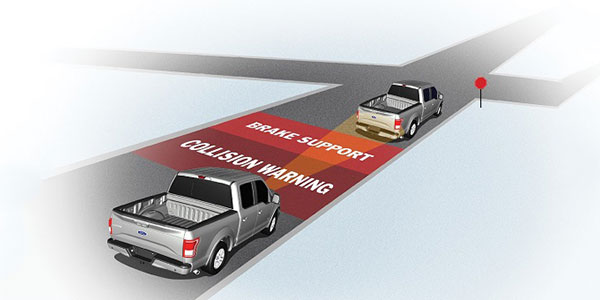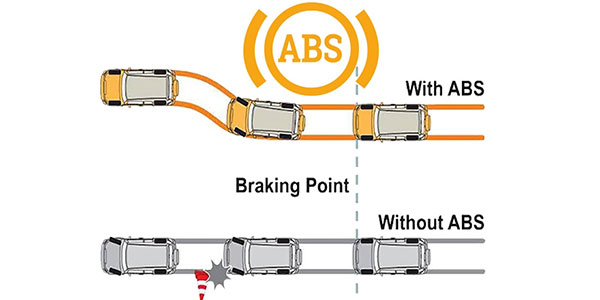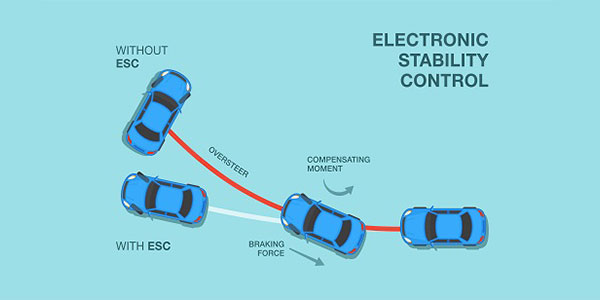Don’t be hasty when it comes to safety. The past year has taught people that nothing is more essential than life. And safety does not occur by chance; it must be prepared for. Now that we’ve covered safety, let’s move on to car owners.
Even the most basic safety features in your car can make a significant difference. People frequently fail to pay attention, but if you’ve finally determined to be safe while driving your car, you’ve come to the right place.
There are numerous features in your automobile that will assist you in the improvement of your car, but some of them will truly enhance your safety in the event of a crash.
Minimum Safety Features A Car Must Have
Here are some of the safety features that every car should have these days. Accidents do not happen with a warning, so it is essential to always take precautions.
These safety features may not appear to be a massive deal, but they can help you recover from any damage that can lead your life.
Airbags
Let’s start with the most important. The one that every vehicle should have. In the event of a collision, car sensors activate the airbags. The airbag cushion, a flexible fabric bag, an inflating module, and an impact sensor are all part of it.
The aim of an airbag is to offer soft cushioning and restraining to a vehicle occupant during a collision. It can reduce the risk of injury between the flailing occupant and the vehicle’s interior. Airbags will actually keep you safe if you are rushing behind the wheel.
The driver’s seat will undoubtedly have an airbag, but so should the driver’s neighboring seat. It will really reduce the amount of damage that can occur.
There are multiple car accessories that every car owner should have, and just like that in case of safety features, every car owner must have these airbags to keep themselves safe.
Seatbelts

Another quick one. We’ll start with the basics, which we’re all familiar with. Without a question, seatbelts are essential. A seat belt is a collision avoidance technology that is able to protect the driver or a passenger from a dangerous movement that may occur following an accident or an abrupt halt.
By keeping passengers properly situated, a seat belt minimizes the likelihood of serious injury or death in a vehicle crash by minimizing the force of subsequent hits with interior striking hazards.
Every car has seatbelts, but if yours is damaged or broken, immediately repair it. We don’t want to take any chances, after all. Seatbelts are classified as Primary Restraint Systems (PRS) because of the critical role they play in driver protection.
Reverse Sensing System
You’ve probably heard that if you can’t safely reverse your car, you shouldn’t drive at all. In this instance, a reverse sensing system comes in handy. The sensor detects anything behind your vehicle and makes it easy for the driver to grasp.
When you shift into reverse, the mechanism automatically activates. Small sensors transmit and receive ultrasonic radio waves that bounce off barriers and notify you of their whereabouts.
As the car gets closer to the target, the volume of the beeper rises. When you try to park, you genuinely need it, just like you need a rear-view mirror, and it’s for the protection of not only you but also the others who might be injured as a result of a mistake.
Automatic Emergency Braking (AEB)

As previously said, accidents happen without warning. Sometimes you don’t know what to do in an emergency. The term automatic emergency braking refers to a braking mechanism in automobiles that boosts brake force in an emergency.
This safety function is specifically designed to monitor ‘panic stops’ and apply maximum braking force within milliseconds. If the system detects an emergency, it triggers full braking faster than any driver can move his or her foot.
So, even if there is a lot of damage, this safety feature will save you. More and more automobile buyers are looking for this safety feature in their cars these days.
Shatter Resistant Glass

What is the worst-case scenario in the event of a car crash? The glasses surely crack and spread out, causing additional harm to everybody in the car.
In the event of a collision, shatter-resistant glass provides a windshield that shatters into multiple, safe pieces. Shatterproof glass is laminated glass, which is composed of two or more sheets of glass joined together by a transparent interlayer of polyvinyl or resin, but other combinations are occasionally employed.
When cracked, instead of shattering into sharp, jagged shards, glass splits like a spider web but does not break completely. A plus one for this safety feature right?
How Do You Deal With Minor Car Damages?
Now that we’ve discussed Shatter-Resistant Glass, let’s take a quick look at what you can do if your automobile sustains minor damage. Insurance may appear to be pricey, and it is only available to the fortunate. But that is not the case; insurance isn’t all that pricey. For example:
If you’re worried about what will happen if your windshield or other objects are damaged, don’t worry; if you’ve never heard of inexpensive insurance, you should know that there are cheap car insurance solutions that will help you cover these costs.
Unexpected events happen, and your insurance will cover or recover damages for fixing the mess. This includes coverage for the windshield, moon roof, and other repairs. You no longer need to be concerned about high-priced insurance because low-cost insurance can cover your losses while leaving you with no headaches. That sounds like a great deal, right?
Anti-lock Braking System (ABS)

Have you heard of an anti-lock braking system (ABS)? No, it is not the same as automatic emergency braking. An anti-lock braking system (ABS) is a type of safety braking system found in automobiles.
The rear wheels would lock up under emergency braking circumstances, forcing the vehicle to skid and drift to a stop. Now that technology has advanced, here’s what you should know about this safety feature. Anti-lock brakes have multiple benefits in keeping you safe.
ABS works by preventing the wheels from locking up while braking, permitting the driver to keep frictional force contact with the road surface and preserve more grip over the car. We don’t realize it, but these systems make a significant difference in our day-to-day life.
Electronic Stability Control (ESC)

In crucial driving circumstances, electronic stability control systems use automatic computer-controlled braking of particular wheels to help the driver in keeping control of the vehicle.
ESC prevents an automobile from “rolling out” or “plowing out” as a result of slipping wheels causing a loss of road grip. ESC computational power enables the connection of active and passive safety systems, addressing different causes of collisions.
Conclusion:-
So those are some of the absolute minimum safety features that your vehicle must have. Safety is definitely gainful for us, and accidents are painful. Taking these essential safety features seriously can make you feel more secure. For the time being, stay safe!
